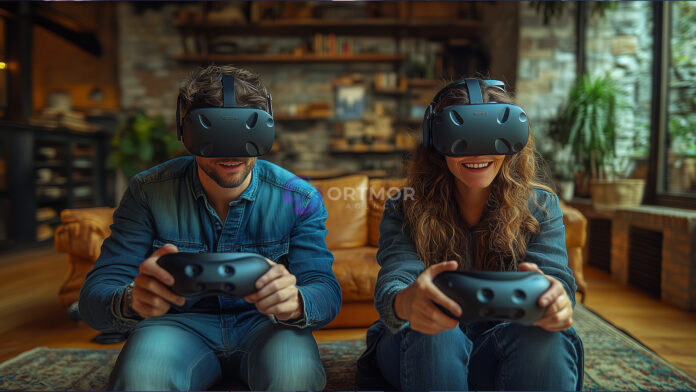In recent years, the rapid advancements in technology have transformed countless aspects of our lives, none more so than in the realm of entertainment. Among these advancements, gaming simulators, particularly Virtual Reality (VR) simulators, have risen to the forefront, redefining how we experience digital interactions. With an unparalleled level of immersion and interactivity, gaming simulators represent a revolutionary leap forward, captivating players and reshaping the industry landscape.
The Evolution of Gaming Simulators
The journey toward immersive entertainment began with rudimentary designs that provided basic visual representations of reality. Early video games relied heavily on 2D graphics and simplistic mechanics, but as technology advanced, developers began to push boundaries. The introduction of 3D graphics, more powerful CPUs, and dedicated gaming consoles allowed for richer storytelling and more complex gameplay mechanics.
As we approached the 21st century, the gaming landscape began to evolve further with the introduction of motion-sensing technology. Devices like the Nintendo Wii and later, Microsoft’s Kinect, enabled players to interact with games through physical movements. While this was a step in the right direction, the introduction of Virtual Reality (VR) simulators took things to a whole new level.
What Makes VR Simulators Different?
At its core, Virtual Reality (VR) simulators aim to create entirely new worlds that players can explore as if they were actually present in them. Through VR headsets, users can experience fully immersive environments that engage their senses like never before. When a player dons a VR headset, they are not merely watching a game unfold from a distance; they become a part of the game environment.
This is possible through a combination of advanced technologies, such as stereoscopic displays, motion tracking, and haptic feedback. Stereoscopic displays create a vivid 3D effect that enhances depth perception, while motion tracking allows players to look around and interact with the virtual space as they would in real life. Haptic feedback technology adds another layer of immersion by simulating physical sensations, whether it be the feel of rain or the recoil from a virtual weapon.
Real-World Applications
The applications of Virtual Reality (VR) simulators have expanded well beyond traditional gaming. Industries ranging from healthcare to real estate are leveraging VR technology to transform their practices. For instance, healthcare professionals are using VR simulators for surgical training, enabling them to practice procedures in a no-risk environment before operating on real patients. Similarly, real estate agents employ VR walkthroughs to provide potential buyers with immersive tours of properties, offering experiences more engaging than static images or videos.
Furthermore, the educational sector is also tapping into the potential of VR. Science students can conduct virtual experiments, history classes can traverse ancient civilizations, and language learners can immerse themselves in the culture of the country where their target language is spoken, all from their classroom or living room.
The Future of Gaming Simulators
As technology continues to evolve, the future of gaming simulators looks increasingly promising. Projects like the metaverse—an interconnected virtual reality space where users can interact with a computer-generated environment and other users—are already in development. Companies like Meta (formerly Facebook), Microsoft, and various game developers are investing billions in creating vast, immersive universes designed for social interaction, work, and entertainment.
Moreover, innovations such as augmented reality (AR) and mixed reality (MR) are making their way into gaming simulators, enriching experiences by layering digital information onto the real world. Games such as Pokémon Go have laid the groundwork for what the future may hold, blending both AR elements with traditional gameplay.
Challenges and Considerations
While the future appears bright for gaming simulators and Virtual Reality (VR) simulators, challenges remain. Issues such as motion sickness—often referred to as VR sickness—have posed significant hurdles for developers. Creating experiences that are immersive but not disorienting has been the focus of ongoing research.
Moreover, accessibility is a concern; high-quality VR equipment can be prohibitively expensive for the average consumer, limiting widespread adoption. The gaming industry will need to find ways to make VR simulations more affordable and accessible without sacrificing quality.
Conclusion
In summary, gaming simulators, particularly Virtual Reality (VR) simulators, represent a revolutionary leap into immersive entertainment that is not only changing how we play games but also how we perceive reality. With technological advancements continually pushing boundaries, from the evolution of graphics to the integration of multi-sensory experiences, the future of gaming is filled with endless possibilities. As we continue to explore this exciting frontier, one thing is certain: our interactions with digital entertainment will never be the same. Whether you’re a casual gamer or a tech enthusiast, the world of VR simulation beckons, promising experiences limited only by our imagination.
